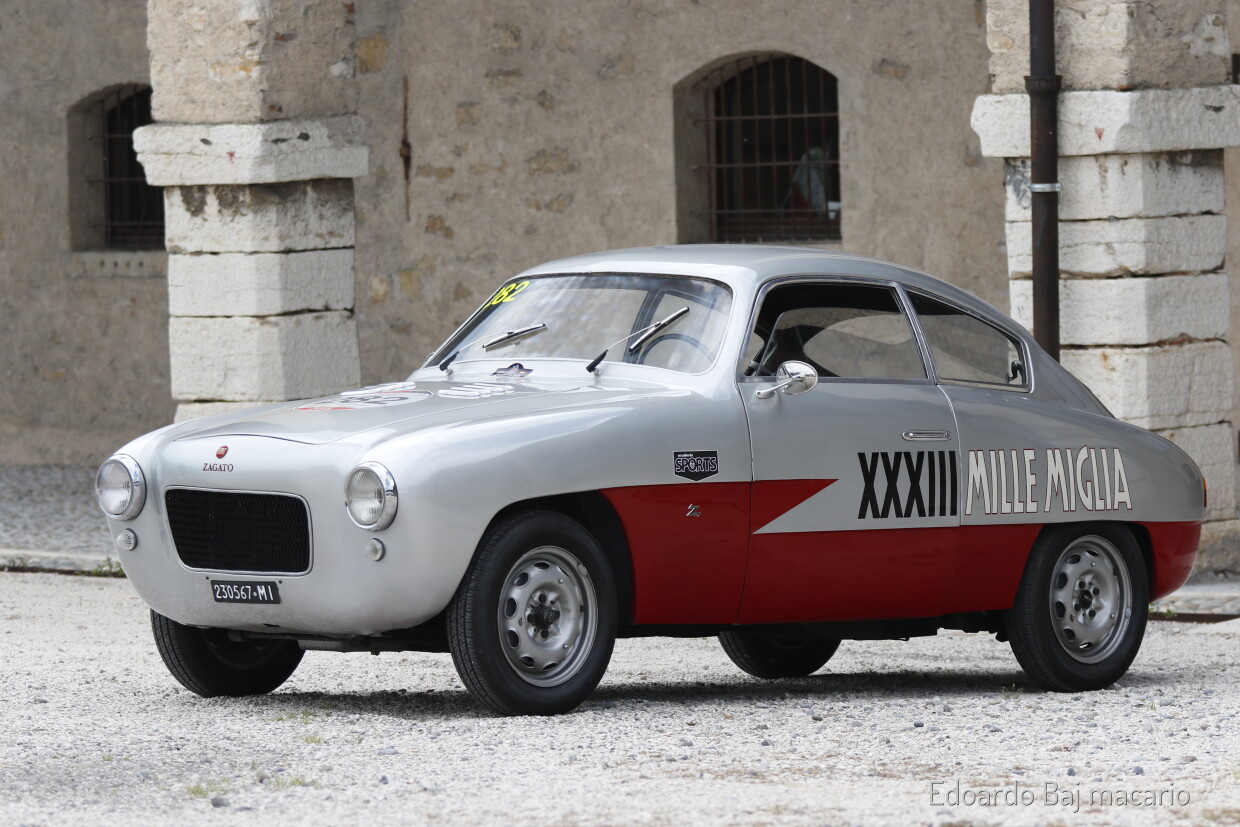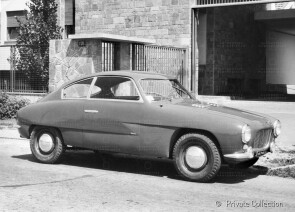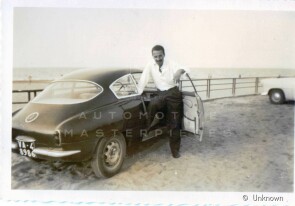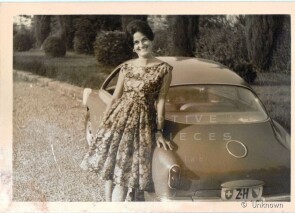
1953 Fiat 1100/103 TV Zagato
ON/OFF
Why am I an Automotive Masterpiece?
Many cars are loved for one reason or another. Some recall precise aspects of our history. Few, like the Fiat 1100 tell so many stories of Italy from the late 30s to the late 60s. The 1100 was the “child” of the Fiat 508C, the New Balilla 1100, and it quickly acquired the nickname "musone" for its imposing front grille. It underwent many evolutions to arrive in 1953 with the “birth” of the 1100/103. A totally new car, equipped with a monocoque chassis. It was on this that the designers, in the electrifying years of the “boom”, went wild in designing sports and elegant models. Pinin Farina being among the finest. Zagato, among the sportiest. The Fiat 1100/103 was introduced in 1953; compared to the 1100 E it had a modern 4-door sedan body with integrated mudguards and front lights. Technically, apart from the transition to the monocoque solution, it was a classic design: rear-wheel drive, independent front, rear live axle and drum brakes. The name of the new model (1100/103) came from its project number. The model, despite being a family car, was immediately successful with sportsmen; even Enzo Ferrari complimented it. In October 1953, the car became available in an openly sports version, the 1100 TV (Turismo Veloce). The car boasted 48 hp, compared to the 36 hp in the normal versions, thanks in part to a double-barrel Weber carburetor and a higher compression ratio. On the TV, the transmission was divided into two parts connected by a joint, the final ratio also changed. Externally it was recognizable for its two-tone paint, richer finish, "tail" on the sides of the trunk and a central third light in the front grille. In 1956, a restyling involved all 1100/103s, giving birth to the 103 E series. In addition to some modifications to the front (new grille without the third central light, adoption of 2 fog lights) and to the interiors (dashboard, instrumentation, heating, coverings), the saloon benefited from a new tail light design and a different positioning of the spare wheel in the luggage compartment. The two-tone paint on the 103 E version also extended to the sides. From a more technical point of view, the E TV sedan now enjoyed 53 hp, with a declared maximum speed of about 140 km/h. The TV was widely used in competitions and its most prestigious victories include class wins at the Mille Miglia in 1954 and 1955. Luciano Ciolfi won the Italian Touring Car Championship in a TV 1100 and Umberto Agnelli competed several times with a Turismo Veloce .
The Zagato business experienced a real boom in the fifties and sixties, especially in the field of Gran Turismo: Maserati, Lancia, Aston Martin, Abarth, without neglecting the “beloved” Alfa Romeo, were dressed with streamlined and aerodynamic lines. Zagato has also built a "Gran Turismo" on the basis of the popular Fiat 1100/103, especially in its sporty TV version. Also in this case the shapes are simple, rounded and effective for competitive use.
Fiat 1100/103 TV Zagato, chassis no. 103*014461* is a car produced on a Fiat chassis “for coachbuilders”. From Fiat archives it results that chassis 014461 was produced at the Mirafiori plant, as chassis and engine only and without bodywork. It left the factory on 21 July 1953 and was sent to the Fiat branch in Pavia. It was then bodied by Zagato and completed in late 1953. A very rare car, it was owned by Elio Zagato himself in 1954. Variation on the Fiat 1100/103 theme by Zagato, designed without compromise for the 1950s GT class, as the Fiat 8V, Alfa Romeo 1900 SS, Maserati A6G Zagato. It’s one of the very few Fiat 1100/103 Zagato believed to have been produced; 15 certainly identified. It shows the shape and volumes of the 1950s’ GT Zagato. And an extraordinary weight-power ratio. Only three surviving specimens are known. It seems that the car had a life as a “fuoriserie” to be shown with pride and driven with pleasure; it’s yet to be discovered a sporting history. But the owners’ history is already known. The 1st owner was Claudio Monteverdi who ordered the car new, then the car came back in the hands of Elio Zagato, the 3rd owner, Elio Casacci had the car for a very long time. Casacci took the car with him when he moved to Switzerland and registered it ZH 190412. At some point in time, the car was moved back to Italy from Switzerland but never again registered. Around the year 2000, Casacci had it “restored” and painted silver and took the car to Germany where he was living at that time. It has been temporarily registered in Germany but they had trouble getting it TüV approved due to its technical condition. Casacci died around 2012 and the car was inherited by his wife and son (Marco). So, the car was a “one family car” from 1956 to 2014. The car, then, had new owners until the last collector. It features lightweight aluminum bodywork with Perspex windows and typical minimalistic Zagato interior; all handmade. The matching numbers engine has an Abarth tune-up with two Weber carburetors. The four-speed gearbox is operated by floor-mounted lever: a SIATA optional. This car is an important example of 1950s Italian design, related to form and function. It participated in Mille Miglia re-enactment and was shown at the 90 Anni, 1000 Miglia” exhibition.





